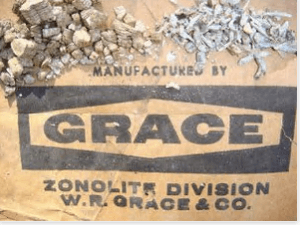Claire’s Asbestos Problems Extend Overseas
As if Claire’s, a popular retail chain for teens and tweens, wasn’t having enough trouble in the U.S., their problems with asbestos in the make-up they peddle at their retail locations has stretched across the pond to the Netherlands.

There are 32 Claire’s stores in The Netherlands, and they are just as popular with young girls there as they are with the 10-16-year-old crowd in the United States.
The authorities ordered the removal of the products after laboratory testing showed 2% to 5% asbestos in a face powder and 0.1 to 2% of the toxic substance in a contouring powder.
Despite the low concentrations contained within the make-up products ‘there is a risk to health,” the authorities concluded.
The investigation into the Dutch-sold products began last month. However, the authorities there had considered testing the products back in December, when the story about the tainted Claire’s products first hit the news in the U.S.
However, Dutch health and safety officials said they suspended that idea because the U.S. Food and Drug Administration had assured them that there was nothing wrong with the products in question, which are popular with young girls just starting to wear make-up.
But the Netherlands has a “no tolerance” policy when it comes to asbestos.
Use of the mineral is banned in that country. That’s why they’ve also asked Claire’s to withdraw additional products made with the same ingredients until further notice.
There is no word as to whether more testing will be conducted or whether Claire’s has commented on the current situation.
However, the retailer is suffering with money problems. In the U.S., they have filed for bankruptcy protection though they do not intend to close any stores, a spokesperson said.
It is likely that their insolvency is a result of decreased traffic at malls nationwide, but there’s no doubt that the asbestos situation had an impact on their decreased sales as well, especially during the recent holiday season, when the problem was first discovered.

 The authors, a group of doctors and nurses from various Japanese hospitals, sent a questionnaire to hospitals and patient advocacy groups, who distributed them to malignant pleural mesothelioma (MPM) patients considered to be disease-free at this time.
The authors, a group of doctors and nurses from various Japanese hospitals, sent a questionnaire to hospitals and patient advocacy groups, who distributed them to malignant pleural mesothelioma (MPM) patients considered to be disease-free at this time. USGS estimates that approximately a million homes in this country contain vermiculite attic insulation. While that number seems small in comparison to the number of homes in the U.S., it’s still an alarming statistic considering the harm it can do when it’s tainted with asbestos.
USGS estimates that approximately a million homes in this country contain vermiculite attic insulation. While that number seems small in comparison to the number of homes in the U.S., it’s still an alarming statistic considering the harm it can do when it’s tainted with asbestos.
 Dr. Leonard Berry, Distinguished Professor of Marketing at Texas A&M University, called his study “Role of Kindness in Cancer Care”, and in it he emphasizes that high tech treatments must be balanced by high touch care.
Dr. Leonard Berry, Distinguished Professor of Marketing at Texas A&M University, called his study “Role of Kindness in Cancer Care”, and in it he emphasizes that high tech treatments must be balanced by high touch care. A December 22 report on a Rhode Island television news station was sparked by the operations director at a law firm in that state. The person in question, Kristi Warner, told reporters that she sent some of her daughter’s make-up – which she purchased at Claire’s – to a lab for testing after hearing about similar stories concerning low-priced make-up products geared towards young users.
A December 22 report on a Rhode Island television news station was sparked by the operations director at a law firm in that state. The person in question, Kristi Warner, told reporters that she sent some of her daughter’s make-up – which she purchased at Claire’s – to a lab for testing after hearing about similar stories concerning low-priced make-up products geared towards young users. According to an article in the Insurance Journal, the highest court in the State of New York recently ruled that American Home Assurance Company must defend contractors and the Port Authority of New York and New Jersey against asbestos claims that have been brought forward by construction workers who became sick after performing work on the original World Trade Center back some 40-50 years ago.
According to an article in the Insurance Journal, the highest court in the State of New York recently ruled that American Home Assurance Company must defend contractors and the Port Authority of New York and New Jersey against asbestos claims that have been brought forward by construction workers who became sick after performing work on the original World Trade Center back some 40-50 years ago.